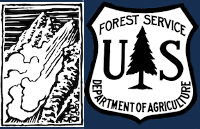18++)_XXX Video=>Katrina Lim Kiffy Viral Video Original Link Fu
01 minutes ago — Sexy Viral Pinay Katrina Lim Kiffy viral video telegram Viral video took the internet viewers on various Leaked social media platforms.Sexy Viral Pinay Katrina Lim Kiffy viral video telegram Video, a young and talented digital creator, recently became famous thanks to this interesting video.
🔴 𝖢𝖫𝖨𝖢𝖪 𝖧𝖤𝖱𝖤 🌐►𝐃𝐎𝐖𝐍𝐋𝐎𝐀𝐃 𝐍𝐎𝐖 📺📱
WATCH*}Pinay Katrina Lim Kiffy viral video telegram viral original video on tiktok - Samsung Members
WATCH*}Sexy Viral Pinay Katrina Lim Kiffy viral video telegram viral original video on tiktok - Samsung Members
Sexy Viral Pinay Katrina Lim Kiffy viral video telegram viral video
Sexy Viral Pinay Katrina Lim Kiffy viral video telegram Viral video viral video video original video link.
Sexy Viral Pinay Katrina Lim Kiffy viral video telegram Viral video viral video video viral on social media x trending now
Sexy Viral Pinay Katrina Lim Kiffy viral video telegram Viral video viral video ʟᴇᴀᴋᴇᴅ video ᴠɪʀᴀʟ on social media ˣ ᵀʷⁱᵗᵗᵉʳ
Sexy Viral Pinay Katrina Lim Kiffy viral video telegram Viral video viral video ʟᴇᴀᴋᴇᴅ video ᴠɪʀᴀʟ on social media ˣ ᵀʷⁱᵗᵗᵉʳ
[-𝐅𝐔𝐋𝐋-𝐕𝐈𝐑𝐀𝐋-]— Actor Sexy Video Original Video Link Actor Sexy Video V𝐢ral On Social Media X Now [1U2M3N]
[-wᴀTCH-]— Actor Sexy Video Original Video Link Actor Sexy Video V𝐢ral On Social Media X Trending Now
[-wᴀTCH-]— Actor Sexy Video Original Video Link Actor Sexy Video V𝐢ral On Social Media X Trending Now
[-wᴀTCH-]— Actor Sexy ʟᴇᴀᴋᴇᴅ Video ᴠɪʀᴀʟ On Social Media ˣ ᵀʷⁱᵗᵗᵉʳ
[-wᴀTCH-]— Actor Sexy ʟᴇᴀᴋᴇᴅ Video ᴠɪʀᴀʟ On Social Media ˣ ᵀʷⁱᵗᵗᵉʳ
[-wᴀTCH-]— Actor Sexy Video Original Video Link Actor Sexy Video V𝐢ral On Social Media X Trending Now
Actor Sexy Original Video video took the internet by storm and amazed viewers on various social media platforms. Actor Sexy, a young and talented digital creator, recently became famous thanks to this interesting video.
L𝚎aᴋed Video Actor Sexy Original Video V𝐢ral Video L𝚎aᴋed on X Twitter
Actor Sexy Original Video video oficial twitter
L𝚎aᴋed Video Actor Sexy Original Video V𝐢ral Video L𝚎aᴋed on X Twitter
Sexy Viral Pinay Katrina Lim Kiffy viral video telegram Viral video viral video video original video link. Sexy Viral Pinay Katrina Lim Kiffy viral video telegram Viral video viral video video viral on social media x trending now
Sexy Viral Pinay Katrina Lim Kiffy viral video telegram Viral video original Video took the internet by storm and amazed viewers on various social media platforms. Sexy Viral Pinay Katrina Lim Kiffy viral video telegram Viral video , a young and talented digital creator, recently became famous thanks to this interesting video.
l𝚎aked video Sexy Viral Pinay Katrina Lim Kiffy viral video telegram Viral video viral video original video viral video l𝚎aked on x twitter
Sexy Viral Pinay Katrina Lim Kiffy viral video telegram Viral video viral video viral video original video video oficial twitter
l𝚎aked video Sexy Viral Pinay Katrina Lim Kiffy viral video telegram Viral video viral video original video viral video l𝚎aked on x twitter..Bogra
